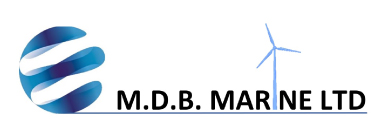Caisson & Riser Inspections
Accessed through the moon pool, or either side of the vessel.
High definition inspection
Caisson & Riser Inspections
Caisson & riser inspections are essential maintenance activities to assess the integrity and condition of these critical components in offshore structures, particularly in the oil and gas industry. ROV’s equipped with advanced sensors, cameras, and manipulators are used to perform these inspections in challenging underwater environments. Here’s an overview of ROV inspections of caissons and risers.
Caissons.
Caissons are large steel or concrete structures used to house equipment, utilities, or provide access to underwater facilities such as offshore platforms or subsea wells. ROVs are employed to inspect caissons for various purposes, including corrosion assessment, structural integrity, and overall condition.
- Visual Inspection: ROVs are equipped with high-definition cameras to provide real-time visual data of the caisson’s exterior and interior surfaces. The operator can remotely navigate the ROV to capture detailed images and videos of critical areas, allowing for the identification of signs of corrosion, marine growth, cracks, or other defects.
- Ultrasonic Thickness Measurement: ROVs can be equipped with ultrasonic thickness gauges to measure the thickness of the caisson’s walls. This non-destructive testing method helps identify areas of metal loss due to corrosion, providing crucial information for maintenance planning and repairs.
- Cathodic Protection Assessment: For steel caissons, ROVs can assess the effectiveness of cathodic protection systems installed to prevent corrosion. The ROV can inspect anodes and reference electrodes to ensure the system is functioning correctly.
- Marine Fouling Inspection: Marine fouling, such as barnacles or algae, can accumulate on caissons and impact their performance. ROVs can inspect the caisson’s surface for fouling buildup and assess the need for cleaning or biofouling mitigation.
Risers
- Visual Inspection: ROVs are used to perform visual inspections of risers to identify external damage, coating integrity, and any signs of corrosion or mechanical wear.
- Anode and Cathodic Protection Inspection: Like caissons, risers may have cathodic protection systems installed to prevent corrosion. ROVs can inspect anodes and reference electrodes, ensuring their proper functioning and effectiveness.
- Stress and Strain Analysis: Some ROVs are equipped with specialized sensors to measure the stress and strain on risers. This data helps engineers assess the structural integrity of the risers under different operating conditions and ensures compliance with safety standards.
- Pipeline and Connection Integrity: ROVs can inspect the connection points of risers to ensure they are secure and free from damage. Additionally, they can inspect the subsea pipelines attached to the risers for integrity and potential issues.
Benefits of ROV Inspections
Using ROVs for caissons and riser inspections offers several advantages:
- Remote Accessibility: ROVs can access challenging underwater environments and hard-to-reach areas without the need for human divers, ensuring safety and efficiency in inspections.
- Real-Time Data: ROVs provide real-time video and sensor data, allowing for immediate assessment and decision-making during inspections.
- Non-Destructive Testing: ROV inspections are non-intrusive and do not require dismantling or damaging the structures, reducing operational disruptions and costs.
- Cost-Effective: By detecting issues early and enabling proactive maintenance, ROV inspections can prevent costly downtime and repairs in the long run.
- Environmental Monitoring: Some ROVs can be equipped with environmental sensors to assess the impact of structures on the marine environment.
In conclusion, ROV inspections of caissons and risers are crucial for maintaining the integrity and safety of offshore structures in the oil and gas industry. These inspections allow for the early detection of corrosion, defects, or other issues, enabling proactive maintenance and ensuring the reliable operation of subsea assets. The advanced capabilities of ROVs, such as visual inspection, ultrasonic thickness measurement, and stress analysis, provide valuable data for engineers and operators to make informed decisions and extend the service life of these critical components.
If your assets caisson & risers inspections are due, click contact us and a representative will be in touch.

